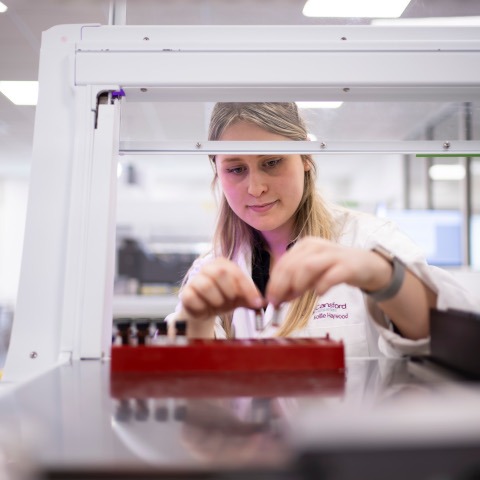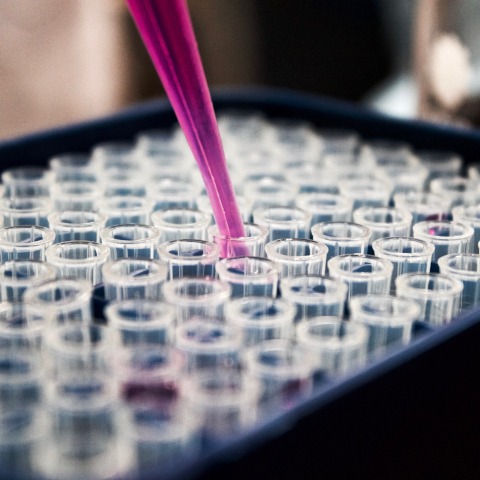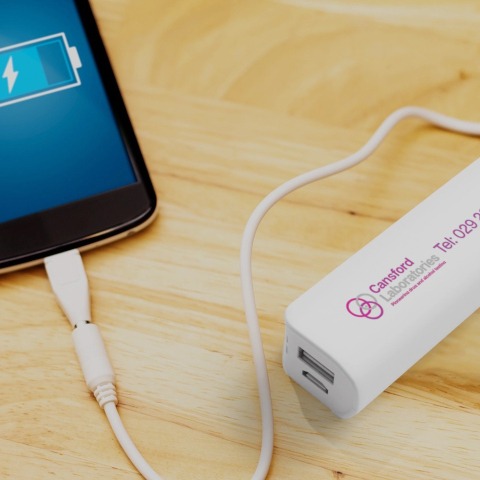ABOUT CANSFORD
FAQs
Knowledge is power, and we believe in sharing it. Our FAQ is where we answer your questions and explain the facts, figures, and processes behind our drug and alcohol testing – all in one place.
Search By Topic:
Hair strand testing
How are these samples taken?
Hair samples are usually taken from the head, but can also be collected from areas like the chest, legs, or arms. A trained collector uses scissors to cut a small sample, about the size of a shoelace, which is then sealed in a tamper-proof envelope and sent to the lab.
To ensure accurate results, it’s important that a trained professional collects the sample. Professionals like a GP or solicitor are acceptable, but we recommend using a trained collector.
At Cansford, we provide expert collectors who can arrive anywhere in the UK within 48 hours, making the process as comfortable as possible for the donor.
How long must hair be?
To be tested, the hair just needs to be long enough to hold for cutting. Since hair grows at different rates, head hair typically grows about 1cm per month. So, for a 3-month period, you’d need at least 3cm of hair. Body hair, on the other hand, can cover a longer period of time.
Do hair treatments, e.g. dyes, heat, etc affect results?
Hair treatments like heat styling or dyes can slightly alter test results, but only to a very small extent. These changes are usually not enough to affect the overall outcome of the test. While treatments may impact the appearance of the hair, they don’t significantly influence the detection of substances within the hair. So, even with hair treatments, the results remain reliable and accurate.
Can bald people be hair-tested?
Yes – providing they have body hair. If the donor has no hair on their head, their chest, underarm or pubic hair can be tested instead. Although, this may affect the detection timeframe for the sample.
Blood testing
How are these samples taken?
Historically, blood samples required collection by a trained phlebotomist using a needle, which could be uncomfortable and sometimes more invasive. However, recent advancements in testing technology have allowed Cansford Laboratories to offer a less invasive method. Instead of using a needle, blood can now be collected through a simple finger prick. This new technique makes the process quicker, more comfortable, and accessible, without compromising the accuracy of the test results.
Why is the detection window for PEth and CDT blood alcohol tests limited to about 28 days?
The detection window for PEth and CDT (Carbohydrate Deficient Transferrin) blood alcohol tests is limited to about 28 days because these markers only remain in the bloodstream for a certain period after alcohol consumption.
Why does an LFT blood alcohol test only show a "snapshot" of a person's liver health?
An LFT (Liver Function Test) blood alcohol test provides a snapshot of the liver’s current state by measuring specific enzymes and proteins that reflect its function. However, it doesn’t offer a long-term view of liver damage or alcohol consumption over time. The test only shows the liver’s condition at the time of testing, and levels can vary due to factors such as recent alcohol intake, medications, or other health conditions.
Can cold remedy solutions affect a PETH TEST?
Cold and flu remedies generally don’t affect the outcome of a PEth test, as PEth is specifically designed to detect alcohol consumption. However, certain medications, especially those containing alcohol or similar compounds, may influence the test results. When we collect samples, we always ask about any medications being taken and gather a brief medical history to ensure that we take all relevant factors into account during the testing process. This helps ensure the most accurate results.
What is the main difference between PEth and CDT tests?
Both PEth and CDT tests are used to detect alcohol consumption. PEth is highly sensistive, allowing us detailed insights into drinking levels within the past 28 days. CDT, while also detecting alcohol consumption over a similar period, primarily indicates chronic heavy drinking patterns.
Nail testing
How are these samples taken?
The nails are clipped from a number of fingers or toes. The sample is placed in a special foil wrap, inside a sealed, tamper-proof envelope that is sent to the laboratory.
When would it be necessary for nails to be taken as a sample?
In cases where donors have no body hair, it’s possible to test their fingernails or toenails for traces of drugs and alcohol.
DNA testing
How are these samples taken?
Samples are collected by swabbing the inside of the donor’s cheek, using a sterile applicator.
What do DNA tests detect?
DNA tests are used to confirm the relationship of one donor to another. In most instances, DNA tests are used to confirm whether donor is the father of another. DNA tests may also be used to prove maternity and sibling relationships.
General / other questions
What are cut offs and why are they important?
Cut-offs refer to specific threshold levels set in drug and alcohol testing to determine whether a substance is present in a sample. If the concentration of a substance is above the cut-off level, the result is considered positive; if it’s below, the result is negative. Cut-offs are important because they help avoid false positives by ensuring that only significant amounts of a substance are flagged. They also provide a standard for consistency in testing and ensure that results are reliable and legally defensible.
What substances can Cansford test for?
We test for a wide range of substances and are always adding more. The main substances we test for are: alcohol, amphetamines, methamphetamines, benzodiazepines, cannabinoids, cocaine, opiates, opiods, ketamine.
For a full list download our information sheet.
Who takes the samples?
To ensure accurate results, it’s important that a trained professional collects the sample.
At Cansford, we provide expert collectors who can arrive anywhere in the UK within 48 hours, making the process as comfortable as possible for the donor.
What are your turnaround times?
Cansford Laboratories is proud to offer the UK’s fastest drug and alcohol laboratory testing service.
Our collections team are typically available within 48 hours, Monday to Friday.
Turnaround times for our laboratory test results are as follows:
Are the test results provided by Cansford Laboratories admissible in court?
Yes, all test results supplied by Cansford Laboratories are admissible in court, provided the chain of custody for the sample is unbroken. This ensures the sample is from the correct person and has not been tampered with before being sent to our lab. To guarantee this, we recommend working with one of our trained UK-wide collection teams, who ensure the integrity of the sample.
Additionally, Cansford Laboratories offers expert witness services, where our qualified reporting scientists can provide detailed, scripted case reports for use in court, panel hearings, or tribunals. This includes a declaration of the test result, qualifications of the reporting team, and details about the sample itself, ensuring full transparency and reliability.
What is the difference between an overview and segmented analysis?
An overview analysis gives a general picture of drug or alcohol use over a broad period, typically looking at the entire sample. In contrast, a segmented analysis breaks the sample into smaller sections, often by time, to provide more detailed insights about when exactly a person used drugs or alcohol. This allows for a clearer, more specific understanding of usage patterns over time.
Is it possible to tell how much of a substance someone has taken based on their results?
Tests can’t give an exact amount of a substance someone has taken for two main reasons. First, everyone processes substances differently, so the results can vary from person to person. Second, the purity of the drug someone takes also affects how much shows up in their sample. Because of these factors, there’s no single standard for how much of a substance should be in a sample.
What's the difference between CoA and Expert Report.
All of our tests come with a Certificate of Analysis (COA), showing substances tested for and their concentrations. An Expert Report, however, is an additional service, offering professional interpretation and analysis of the results, often used for legal or regulatory purposes.
What is an NPS, what falls into this category.
NPS stands for New Psychoactive Substances, which are a group of drugs designed to mimic the effects of traditional substances like cannabis, cocaine, or ecstasy. These substances often come in the form of synthetic chemicals or compounds that are created to produce similar effects but are chemically different from the original drugs. Common examples of NPS include synthetic Spice and bath salts. Because they are often unregulated, NPS can pose significant health risks and can be difficult to detect in traditional drug tests.
Glossary of terms
Admissable
Something that is accepted as valid or allowed in a legal context, such as in court.
Alcohol
A legal depressant that slows brain function, affecting coordination, judgement, and reaction times. While widely consumed, excessive use increases the risk of addiction, liver disease, and mental health issues. It is a key factor in many legal cases, including drink-driving and public disorder offences.
Amphetamines
A group of stimulant drugs that increase energy and focus. Some, like those used to treat ADHD, are available on prescription, while illicit forms such as street “speed” are commonly misused. They can cause restlessness, aggression, and cardiovascular issues. Stronger derivatives, like methamphetamine, have a higher potential for harm and addiction.
Barbiturates
A class of sedatives that were once widely prescribed for anxiety and sleep disorders but are now rarely used due to their high risk of overdose. They depress the central nervous system, causing drowsiness and, in excess, respiratory failure. Although less common today, their misuse remains dangerous.
Benzodiazepines
A class of sedatives prescribed for anxiety, insomnia, and seizures, but also widely misused. They slow brain activity, causing drowsiness and memory impairment, and can be dangerous when mixed with other depressants like alcohol. While legal with a prescription, unauthorised possession or supply carries legal consequences, and long-term use can lead to dependence.
Cannabinoids
Compounds found in cannabis that affect mood, coordination, and perception. The main psychoactive component, THC, can cause relaxation but also anxiety and impaired judgement. While cannabis remains illegal, some cannabinoid-based medicines are available on prescription. Regular use can impact mental health and memory, particularly in younger users.
Cocaine
A powerful stimulant that increases alertness and confidence but can also cause agitation, paranoia, and heart complications. Classified as a Class A drug, it is commonly found in powder or rock (crack) form and is illegal to possess, supply, or produce. Its short-lived effects often lead to repeated use, increasing the risk of dependency.
Detection window
The detection window refers to the period of time during which a drug or alcohol can be detected in the body. For example, hair strand testing can detect drugs like cocaine for up to 12 months.
Ketamine
A dissociative anaesthetic used in medicine and veterinary practice. It can cause hallucinations, detachment from reality, and, in high doses, unconsciousness. Its misuse carries risks of bladder damage, memory loss, and serious injury due to its numbing effects. Though medically valuable, unauthorised possession and supply are illegal.
Metabolite
A metabolite is a substance created when the body breaks down a drug. For example, codeine is a metabolite formed when the body processes morphine, which is an opiate.
Methadone
A synthetic opioid used in pain management and as a substitute in opioid dependency treatment. It helps reduce withdrawal symptoms but still carries a risk of misuse, overdose, and dependency. While legally prescribed, unauthorised possession or sale is illegal, and its strength means incorrect dosing can be fatal.
Methamphetamine
A highly potent stimulant that causes intense euphoria, increased energy, and, over time, severe mental and physical health issues. It is far stronger and more addictive than regular amphetamines, with long-term use leading to paranoia, aggression, and cognitive decline. Classified as a Class A drug, its production and supply are often linked to organised crime.
New Psychoactive Substances (NPS)
A range of synthetic drugs designed to mimic the effects of controlled substances like stimulants, hallucinogens, or sedatives. Their constantly changing formulas make effects unpredictable and increase health risks. While some were once legally sold as “legal highs,” most are now controlled substances.
Opiates
Naturally derived from the opium poppy, these drugs—including morphine and codeine—are used medically for pain relief but carry a high risk of addiction. They slow breathing and heart rate, making overdose a serious risk. Illegal opiates, such as heroin, are associated with severe withdrawal symptoms and long-term health damage.
Opioids
A broader category that includes synthetic and semi-synthetic drugs like fentanyl and oxycodone, as well as natural opiates. Used to treat pain, they are highly addictive and contribute to overdose deaths worldwide. Even when prescribed, misuse can lead to dependence, with withdrawal symptoms making them difficult to stop.
Phlebotomist
A phlebotomist is a healthcare professional who is trained to collect venous blood samples from donors.
Steroids
Synthetic hormones that promote muscle growth, commonly misused for performance enhancement. Long-term use can lead to heart problems, liver damage, and psychiatric effects such as aggression. While some steroids are prescribed for medical conditions, their non-medical use is associated with health and legal risks.
Tamper proof
Our packs are designed to securely store samples, ensuring that they are not altered before testing. This helps maintain the chain of custody and ensures the sample’s integrity, making the results admissible in court if needed.




